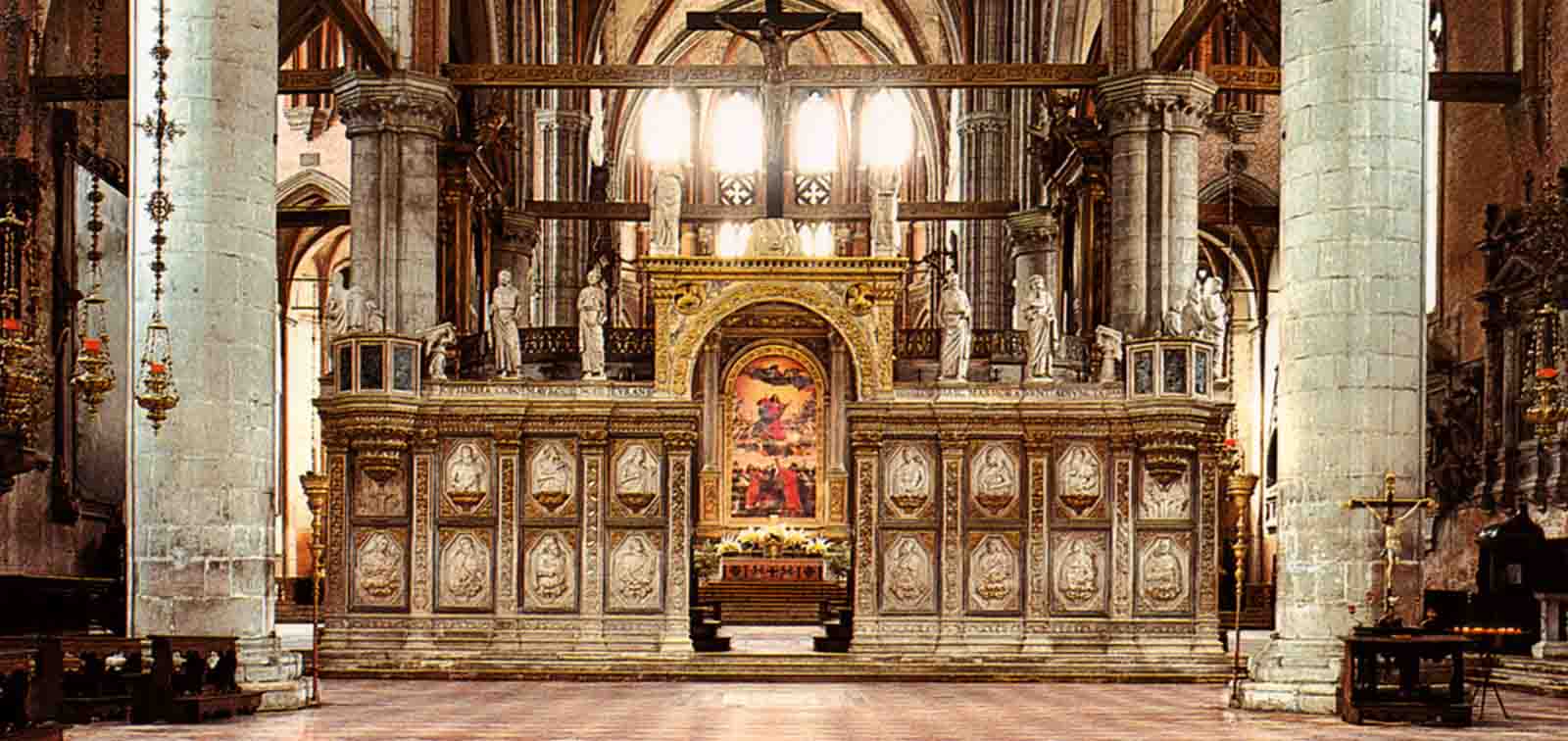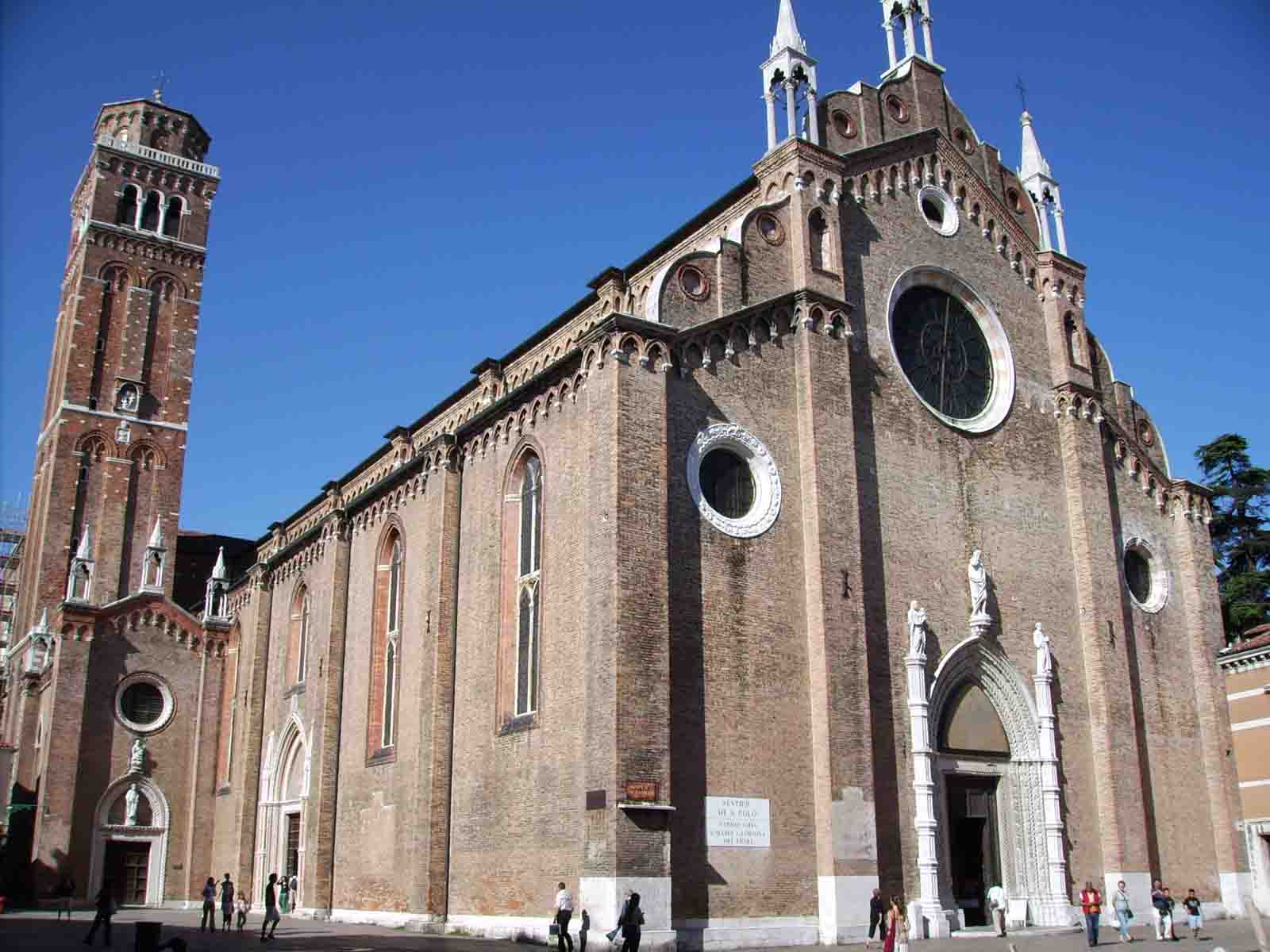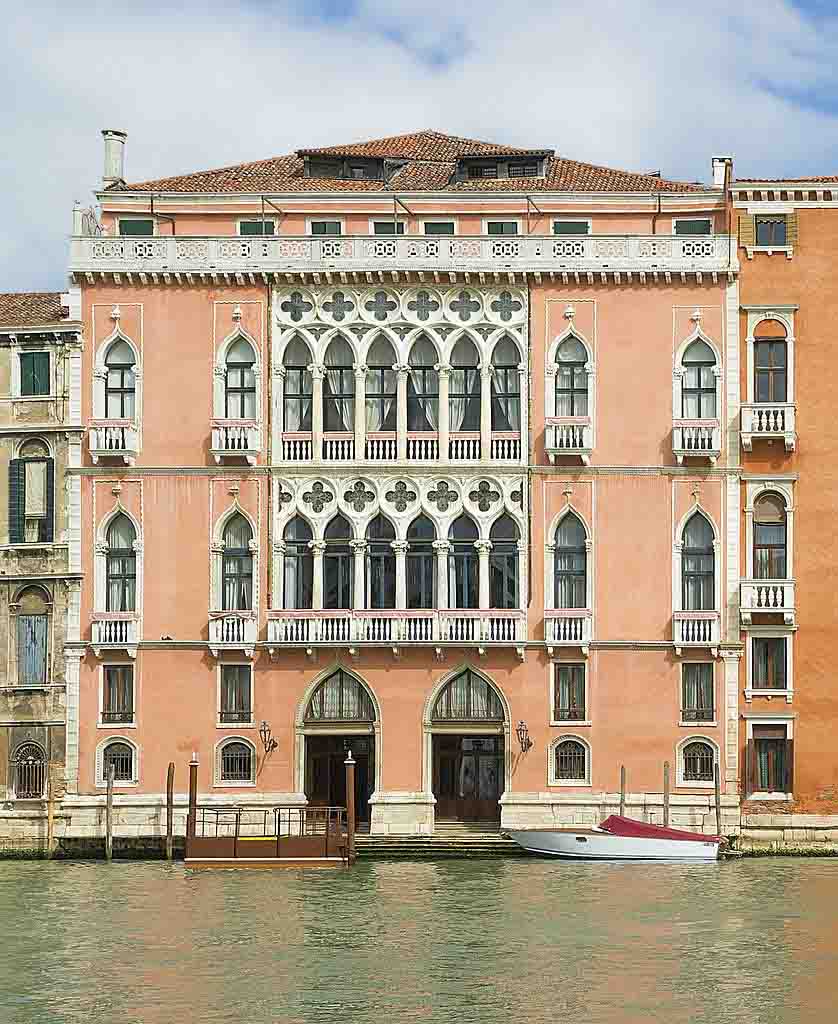

The Franciscan friars (or Frari) came to Venice in 1222, but had no permanent home until Doge Jacopo Tiepolo gave them some unreclaimed land in 1236, adjacent to the abandoned Benedictine abbey they were inhabiting. The church that they built, dedicated in 1280, extending the abbey, was much smaller than the one we see today, and faced in the opposite direction. The current church was begun shortly after, in 1340, but work was slow - the old church was still being used in 1415, but it was demolished shortly after this date to complete the East end of the nave, work having been begun at the West end. The new church was finished in 1442, and consecrated in 1492.

The Palace, ever since the propertv of the Pisani familv, was erected in the second half of the XVth Century at one of the most attractive points along the "Canal Grande" half way between the Bridge of Rialto and the Ca' Foscari's vault. Built in the Gothic floreal style, it underwent several expansions and restorations began in the early XVIth Century and flnished in the mid XVIIIth Centurv when the last important works which gave it its present day appearance were completed. The architectural importance of the façade, is due to the splendid Gothic mullioned windows of the two main floors. The wonderfully elaborate Baroque decoration inside, is the work of the most outstanding Venetian artists of the XVIIIth Century such as Giambattista Tiepolo, Jacopo Guarana, Gaspare Diziani and Giuseppe Angeli. The magnificent staircase rising in double ramps to the top floor of the Palace, also belongs to the Baroque period and was built to replace the old Gothic outer steps. Thanks to the restoration work of the last decade, the re-establishment of its art collections and the recovery of its original antique furnishings, the Pisani Palace, abandoned for various reasons at the end of the last Century, has regained some of the splendour which in past centuries was admired by famous visitors among whom Tzar Paul of Russia, Joséphine Bonaparte and Joseph Il of Austria.